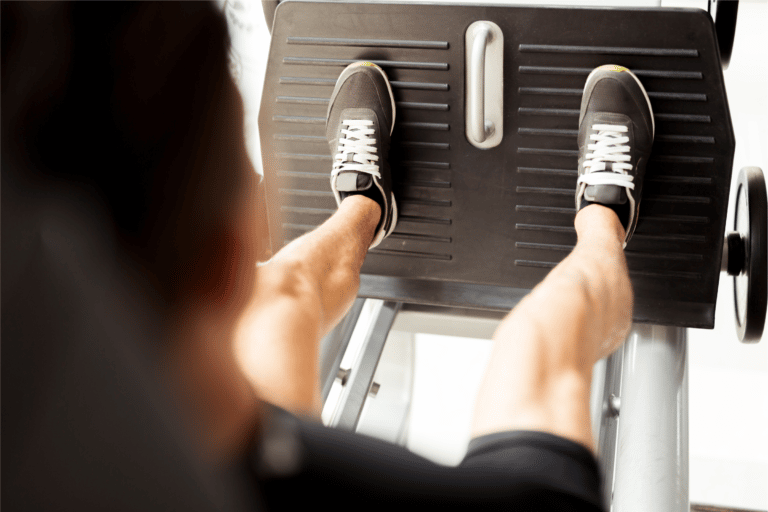Should You Warm Up Before Running: Unpacking the Scientific Consensus
Warming up before running can greatly impact your performance and reduce the risk of injury.
Scientific studies have established that engaging in an active warm-up routine, such as light running or dynamic stretching, can prepare your body for the demands of more vigorous exercise. This preparation increases blood flow to your muscles, elevates your heart rate, and can improve your subsequent running performance.
However, the question of whether you should warm up is not just a matter of common belief but one that is backed by research. A systematic review highlights that active warm-up strategies, like short duration running, are effective for explosive efforts in team sports, which can be applicable to individual running as well. Particular warm-up techniques and their intensity may influence running performance differently.
Your approach to warming up must be tailored to your fitness level and the type of running you intend to do. For sprints or high-intensity runs, studies suggest more dynamic and specific warm-up routines might be beneficial.
On the other hand, for longer, endurance runs, a prolonged warm-up could potentially tire you out before you even start your main workout. Understanding and incorporating these findings into your personal exercise regime will help you get the most out of your runs while keeping your body safer from potential injuries.
Should You Warm Up Before Running? (According to Science)
Warming up before running is a scientifically-backed practice to improve performance and prevent injury. Studies support that proper warm-up strategies increase muscle temperature, enhance muscle elasticity, and boost blood flow, all critical for optimal running performance.
Increasing Muscle Temperature
A key aspect of warming up is to elevate your muscle temperature. Warmer muscles are more pliable and less prone to strains. Research suggests that an active strategy like 7–8 minutes of light running is effective in increasing muscle temperature and readiness for more intense activities.
Enhancing Muscle Elasticity
Muscles with higher elasticity can perform better and with a reduced risk of injury. A systematic review on warm-up strategies in team sports indicated that warm-ups contribute to better muscle elasticity, allowing for more explosive efforts during the run.
Boosting Blood Flow and Oxygen Delivery
Enhancing blood flow through warm-up exercises ensures that your muscles receive more oxygen, which is crucial for endurance and performance. For example, studies have documented that a warm-up influences running performance, despite a long recovery period, by promoting efficient oxygen delivery to the muscles.
Creating the Ideal Warm-Up Routine for Runners
Your warm-up routine is integral to enhancing performance and preventing injuries. It preps your muscles for the demands of running by improving flexibility, mobility, and strength.
Key Components of an Effective Warm-Up
Movement: Initiate your warm-up with light aerobic activity to raise the body’s temperature. Strength: Incorporate exercises that activate key muscle groups used in running. Dynamic stretches: Perform these to improve flexibility and mobility, preparing your muscles and joints.
- Aerobic Activity: 5-10 minutes of jogging or brisk walking
- Muscle Activation: 2-3 sets of body-weight exercises like squats or lunges
- Dynamic Stretching: Leg swings and arm circles to enhance joint range of motion
Sample Warm-Up Exercises
1. Jogging in Place: Begin by jogging lightly in place for a few minutes to get your heart rate up.
- Duration: 2-3 minutes
2. Leg Swings: Stand on one leg, holding onto something for balance, and swing the other leg forward and back.
- Repetitions: 15-20 per leg
3. Walking Lunges: Step forward into a lunge position, ensuring your front knee doesn’t go past your toes.
- Repetitions: 10 per leg
Start your running session with this effective warm-up to maximize your performance and reduce the risk of injury.
Dynamic Stretching Vs. Static Stretching
Dynamic stretching and static stretching are two distinct methods to prepare your muscles for activity. Choosing the right one can optimize your range of motion and enhance your performance.
Benefits of Dynamic Stretching
Dynamic stretching involves active movements that take your joints and muscles through their full range of motion. These movements are designed to increase blood flow and muscle temperature, which can help improve your overall performance.
For example, leg swings, arm circles, and lunges with a twist are forms of dynamic stretches that are particularly beneficial before you start running. They prepare your body for the specific movements it will be performing and have been shown to enhance agility, sprinting, and jumping performance in trained individuals.
When to Use Static Stretching
Static stretching, on the other hand, is where you hold a stretch without movement, typically for 15-30 seconds. This type of stretching is ideal for cooling down after a run as it helps to relax the muscles, realign muscle fibers, and maintain flexibility.
While it was once common in warm-up routines, research indicates that static stretching before vigorous activities may not be the best approach as it can lead to decreased performance. Reserve static stretches for post-run routines to aid in recovery and flexibility.
Specific Warm-Ups for Different Running Workouts

Your running performance can be significantly enhanced with warm-up exercises tailored to the type of running you engage in. Sprinters require dynamic exercises that prime the muscles for speed, while long-distance runners benefit from warm-ups that focus on endurance and steady heart rate increases.
Warm-Ups for Sprinters
For sprints, your warm-up should include high-intensity activities that activate your fast-twitch muscle fibers. This prepares your body for the explosive power needed for sprinting.
- Dynamic stretches: Include leg swings and high knees.
- Strides: After stretching, perform 4 to 6 short sprints, around 60-100 meters in length, gradually increasing in speed but not at full sprinting effort.
These exercises should not exhaust you but should activate your muscles to perform at peak efficiency for the quick bursts of speed required in sprints.
Long-Distance Runners’ Warm-Up
In long-distance running, like a marathon, the focus is on endurance rather than speed. Your warm-up should increase your heart rate and blood flow gradually.
- Light Jogging: Begin with 10 minutes of easy jogging.
- Dynamic Stretches: Incorporate lunges and leg swings to enhance flexibility.
- Drills: Finish with running drills such as butt kicks and A-skips to increase the range of motion and activate your core.
These exercises ensure that your body is appropriately warmed up to sustain a longer effort without tiring quickly, which is crucial for events such as marathons.
Preventing Injuries and Enhancing Performance
Before lacing up your running shoes, know that proper warm-ups are key for staying injury-free and achieving optimal running performance. Leg swings, dynamic stretches, and a gradual increase in intensity set the stage for a successful workout.
Role of Warm-Ups in Injury Prevention
Injury prevention is a crucial aspect of any running regimen. Warm-up exercises, such as dynamic leg swings and balance work, can increase blood flow to your muscles and prepare your joints for the impact of running.
For example, the Prevent Injury and Enhance Performance (PEP) program has been shown to reduce lower limb injuries by incorporating running drills that require no additional equipment.
- Dynamic Leg Swings: Execute front-to-back and side-to-side leg swings to increase hip mobility.
- Balance Work: Practice single-leg stands to improve stability and prepare your joints.
Impact on Running Performance
Your performance during a run isn’t solely dependent on endurance; it’s also a product of how well your body is prepared to transition from rest to high activity.
A methodical warm-up leads to enhanced muscular performance and decreases the risk of injuries. Studies have concluded that a comprehensive warm-up routine not only prevents common running injuries but also primes your body for a more effective running session.
- Incremental Intensity: Start with a low-impact activity like walking, gradually transitioning to a light jog.
- Cool Down: Finish with a cool-down phase to gradually reduce the heart rate and stretch the muscles you’ve worked.






